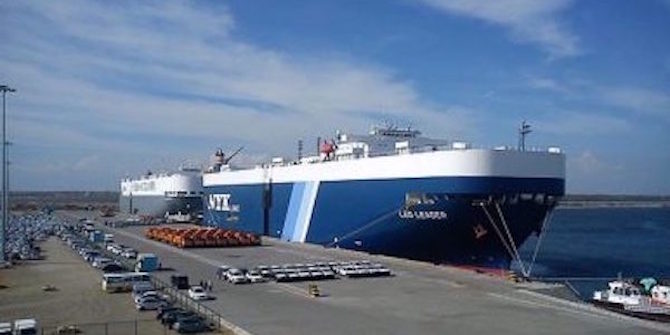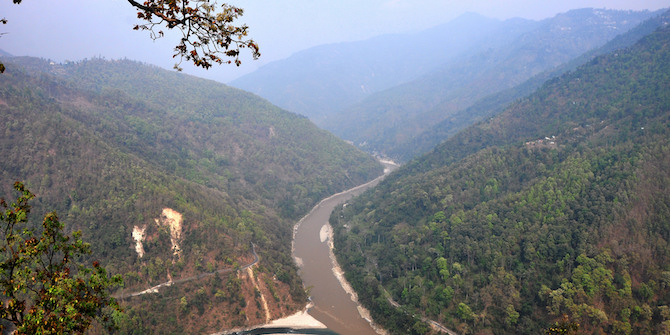In a new paper, Mattia Romani, James Rydge and Nicholas Stern find that the emissions landscape has changed rapidly over recent years with the share of global carbon dioxide emissions from developing countries increasing to 55 per cent.
The world is heading in a difficult and dangerous direction. A range of estimates based on current plans and intentions arrive at similar conclusions: at best, global emissions will plateau at around 50 billion tonnes of carbon-dioxide-equivalent per year over the coming decades, with a strong possibility they will go much higher by the mid-2030s, perhaps to 55-60 billion tonnes p.a. The scale of the risks from these levels of emissions is immense, with likely changes in climate way beyond the experience of modern civilisation. Rising temperatures will create strong possibilities of disruptions to climate and local habitats that would require hundreds of millions of people to move, with risks of severe and extended conflicts.
The overall pace of change is recklessly slow. We are acting as if change is too difficult and costly and delay is not a problem. The rigidity of the processes under the United Nations Framework Convention on Climate Change and the behaviour of participants also hinder progress. The 18th session of the Conference of Parties (COP18) to the UNFCCC in Doha, Qatar, in late 2012, is an opportunity for advance towards the goal of a global agreement in 2015, which will come into force in 2020. COP18 is expected to make progress but major breakthroughs seem unlikely.
One of the challenges is that there is a deep inequity in that rich countries grew wealthy on high-carbon growth and poor countries will be hit particularly hard by climate change. Recognition of that inequity must play a strong part in building international collaboration but must not be allowed to block progress; that would be the most inequitable of all outcomes.
Many developed economies are already taking action to take on and meet commitments to reducing emissions, such as the UK, EU, Australia, and many more. But it is the leadership and example of developing countries that is proving particularly powerful in terms of laying out an alternative pathway for growth and development. For example, India, Brazil, China, Colombia, Ethiopia, Indonesia, Philippines, South Africa, and many more are developing strong plans for emissions reductions in the context of sustainable growth. One important examples is India’s National Action Plan on Climate Change, which includes eight “National Missions” to promote development, mitigation and adaptation objectives.
It is crucial that developing countries are central to action. The emissions landscape has changed rapidly over recent years with the share of global carbon dioxide (CO2) emissions from developing countries increasing from 33 per cent in 1990 to 40 per cent in 1997, when the Kyoto Protocol was signed, to around 55 per cent today. Estimates of future CO2e emissions indicate that this rising trend will continue. Total emissions from developing countries could be as high as 37-38 billion tonnes of CO2e in 2030 (around 70 per cent of global CO2e emissions), and total global emissions for a 2°C path can only be around 32-33 billion tonnes in that year. This arithmetic implies that it is simply impossible to manage climate change unless developing countries take stronger action than currently planned, even if developed countries reduce their emissions to zero by 2030. In quantitative terms it is inevitable that they are at centre stage. And it is in developing countries self-interest that they take stronger action now given the attractiveness of the alternative paths and the dangers of delay.
The deep inequity and the arithmetic imply rich countries have a great responsibility to act radically themselves and to support developing countries’ transitions to low-carbon growth and development paths. Equitable access to sustainable development is an attractive way of framing the issues that may help bridge the gap between developed and developing countries. The focus should be strong across equity, access and development; they should come together to create and define a dynamic partnership between countries where the choice of path is determined by the people of developing countries and that path is supported by rich countries (providing strong example and access to know-how, technology and finance). Collaboration between developed and developing countries in know-how, policies, technologies, the learning processes and resources will be of the essence.
For more information on this topic, including examples of positive change and recommendations to improve equitable access to sustainable development, see M. Romani, J. Rydge and N. Stern, “Recklessly slow or a rapid transition to a low-carbon economy? Time to decide”, Centre for Climate Change Economics and Policy and the Grantham Research Institute on Climate Change and the Environment (December 2012).









The main reason for Global Warming is the burning of fossil fuels (coal, oil, gas) and the conversion of forest-lands to other uses (80% of the original forest cover on Earth has been cleared, fragmented or degraded). Offsetting your carbon footprint by planting trees is an effective direct method to contribute toward reversing climate change.